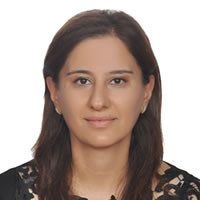Research Article
Aim & Scope
Our Journal's aim is to share knowledge with academicians, workers, and students of engineering, science and maths, health science, and natural sciences, by gathering scientific and vocational studies. Additionally, our other aim is to provide an internationally appropriate platform with the necessary features by discussing engineering, science and maths, health science, and natural sciences innovations to provide a better education for future generations. We hope that our journal will bring a new perspective to that platforms and will contribute to engineering, science and maths, health science, and natural sciences studies.
Our journal is an Open Access journal. Our journal accepts from engineering, science and natural sciences.
Author Guidelines
1. Introduction
This template describes how to write a manuscript for the ISVOS Journal. For detailed information, review the contents given in the sections. Manuscripts should only be prepared with MS Word. Only one font is used throughout the manuscript, “Times New Roman”. The language is only English.
The second section of the template contains information about the page layout and structure of the paper. The third section explains how the title of the manuscript, the abstract, and the parts of the author’s name and information should be written. In the fourth section, how the headings, paragraphs, equations, figures, tables, and references in the main text should be written. The manuscript's acknowledgments, bibliography, and appendixes should be written as specified in the fifth section.
2. Page Layout
All papers of the manuscript must be in one column. Page sizes must be as A4 standards, and the pages must be portrait orientation. Please do not use any page breaks or section breaks in the whole document. Also, hyphenation should be chosen as none. The pages' top margin, bottom margin, left margin, and right margin must be respectively 1.6 cm, 2.21 cm, 1.3 cm, and 1.4 cm. Editors will add page numbers; therefore, please do not add any page numbers.
3. About Title, Abstract, Author’s Information
3.1 Title of Manuscript
The title font style must be Times New Roman, and the font size must be 16 points. The title should be bold, and only the first letter of each word should be capitalized. The title must be centered and leave the 12 points spacing after the title. Also, line spacing must be chosen as single. Do not use any indentation in the title. The title of the manuscript should not be written in italics. We recommend using Title style in MS Word, Home, Styles part in the template document.
The title of the manuscript should be a maximum of 3 lines. Do not use hyphenation in the title. If equations should be used in the title, add the equations using MS Word equations. Please do not use MathType or any other Add-ins instead of MS Word equations in the title.
3.2 Abstract of Manuscript
We recommend using the Abstract style for the paragraph in which the abstract is written. The abstract must consist of a single paragraph and have a “Times New Roman” font style. Font size should be 9 points. After the abstract paragraph, a 12 points space should be left, and the keywords should be written. 0.5 cm indent should be left only in the first line of the paragraph. The abstract should not exceed 300 words.
Keywords should be in 10 font size and “Times News Roman” font style. Minimum 3, maximum 6 keywords should be written in Keywords. Please write all keywords in single quotation marks. Separate each keyword with a comma and put a period after the last keyword. Only the first letter of the first keyword should be capitalized, and all other words should be written in lower case.
Avoid giving literature information in the abstract. In the abstract, given information of the essence of the manuscript, such as the purpose of the study, what has been done, and the results will allow the study to be understood much more easily.
3.3 Author’s Information of Manuscript
The font should be Times New Roman for the author names and surnames, and the font size should be 11 points. Author names and surnames should be written centered on the page. We recommend using the AutName style in MS Word, Home, Styles part in the template document. A 12 points space should be left after the Authors’ names and surnames. Also, line spacing must be chosen as single. Only the first letter of the author's names and surnames should be capitalized, and the other letters should be lowercase. Lettering such as a, b, c, …, should be used for the order of the authors. Footnote information will be added only to the corresponding author for the manuscript. Only the e-mail address of the corresponding author will be written in the footnote content. An example is given on the first page of the template. Please review an example.
Times New Roman font type and 9 points font size should be used for additional information of all authors. Information of the authors part should be written centered on the page. We recommend using the AutAffi style in MS Word, Home, Styles part in the template document. No space should be left, and also, line spacing must be chosen as single. Institute or University of the Authors, City, and Country must be written in one line. After that, the ORCID ID of the authors must be written. An example is given on the first page of the template. Please review an example.
4. Example of Headings
We recommend using the Headings 1 style in MS Word, Home, Styles part in the template document for the first-order Headings. Level 1 Headings must be numbered as 1., 2., 3., etc. Do not forget to use the dot after the number. The first Heading must be written as an Introduction.
Times New Roman font type and 12 points font size should be used for first-order Headings. Headings must be written in bold and justified on the page. The first letter of each word should be capitalized. Before the first-order Headings, a 24 points space must be left, and 18 points space must be left after the first-order Headings. Line spacing must be chosen as single, and indentation must be 0.8 cm selected as Hanging. Do not leave only Headings at the end of the pages.
4.1. Example of Second-Order Sub-Headings
We recommend using the Headings 2 style in MS Word, Home, Styles part in the template document for the second-order Headings. Level 2 Headings must be numbered as 1.1., 1.2., 1.3., etc. Do not forget to use the dot after the number.
Times New Roman font type and 10 points font size should be used for second-order Headings. Headings must be written in bold and justified on the page. The first letter of each word should be capitalized. Before the second-order Headings, a 12 points space must be left, and 18 points space must be left after the second-order Headings. Line spacing must be chosen as single, and indentation must be 1.1 cm selected as Hanging. Do not leave only Headings at the end of the pages.
4.1.1. Example of Third-Order Sub-Headings
We recommend using the Headings 3 style in MS Word, Home, Styles part in the template document for the third-order Headings. Level 3 Headings must be numbered as 1.1.1., 1.1.2., 1.1.3., etc. Do not forget to use the dot after the number. Maximum third-order Headings must be used in the manuscript. Do not use other levels for Headings.
Times New Roman font type and 10 points font size should be used for third-order Headings. Headings must be written in bold and justified on the page. The first letter of each word should be capitalized. Before the third-order Headings, a 12 points space must be left, and 12 points space must be left after the third-order Headings. Line spacing must be chosen as single, and indentation must be 1.4 cm selected as Hanging. Do not leave only Headings at the end of the pages.
5. Main Text
5.1. Paragraphs
We recommend using the Normal style in MS Word, Home, Styles part in the template document for the manuscript’s text. All paragraphs must be justified. Do not use any hyphenation at the end of the lines of paragraphs. Paragraphs font type must be Times New Roman, and font size must be 10 points. Only the first line has a 0.5 cm indentation of the paragraphs. Line spacing must be selected as single. A 12 points space should be left after the paragraphs. It is highly recommended to use the “Spelling Checker/Editor” function of MS Word to avoid unnecessary mistakes.
Bulleted lists can be included. All bulleted lists must be the same and chosen as a black-painted circle. Do not use any other bulleted list figures. An example of the bulleted list is given below. Left indentation must be 1.1 cm. Also, special indentation must be selected as Hanging and 0.8 cm. A 12 points space should be left after the bulleted lists. We recommend using the List Paragraph style in MS Word, Home, Styles part in the template document for the bulleted lists. Do not forget to use the comma after the bulleted lists except the last one. There must be using dot at the end of the last bulleted list.
- First item,
- Second item,
- Third item.
Footnotes can be used in paragraphs. Please review section 5.5 for the Footnotes using rules.
5.2. Equations
All equations must be centered and numbered. Equation numbers must be written in parenthesis. Equation numbers start at 1 and go on. Do not write section numbers in equation numbers. We recommend two different ways to add equations or formulas to the manuscript regularly. These are:
- Using MathType Add-in,
- Using tables.
Follow the steps to use MathType Add-in for adding equations. First, go to the MathType tab in MS Word. In the Insert Equations on MathType tab, select Display. Write the equation in the pop-up window. After writing equations, close and click to Yes for saving equations. Click at the end of the equation. After that, click the Tab button on the keyboard and write the equation number. Do not forget to adjust the equation’s font size to 10 points.
Figure caption should be under the figures. The order of the figure captions should be Fig., figure number, dot, figure description, dot. The font of the figure caption should be Times New Roman, and the figure caption must be placed centered on the page. The figure caption should be bold, and the text font size should be 9 points. Only the first line has a 0.5 cm indentation of the figure caption. Line spacing must be selected as single. A 12 points space should be left after the figure caption. If two images fit next to each other, these may be placed next to each other to save space. We recommend using the Fig-Table style in MS Word, Home, Styles part in the template document for the figure captions. An example of the figure styles is given below. Please review Fig. 1 and Fig. 2.
5.5. Footnotes
- Go to References and click Insert Footnote. Word inserts a reference mark in the text and adds the footnote mark at the bottom of the page.
- Type the footnote text.
Sample article for click
Ethical Principles and Publication Policy
a) Editors' Responsibilities:
Price Policy
ISVOS Journal is an open-access and free journal.
Indexes
Citation Indexes
Other Indexes
Journal Boards
Editor in Cheif

.

Assistant Editor


Editorial Board

















































